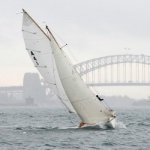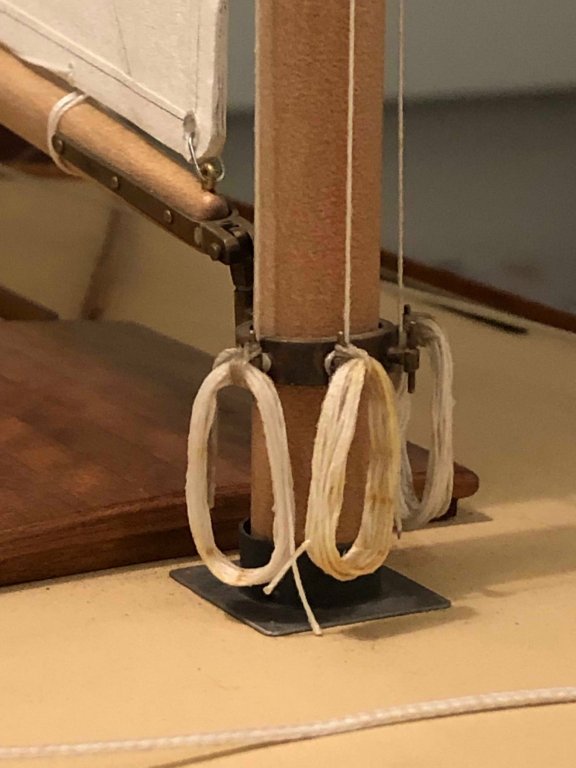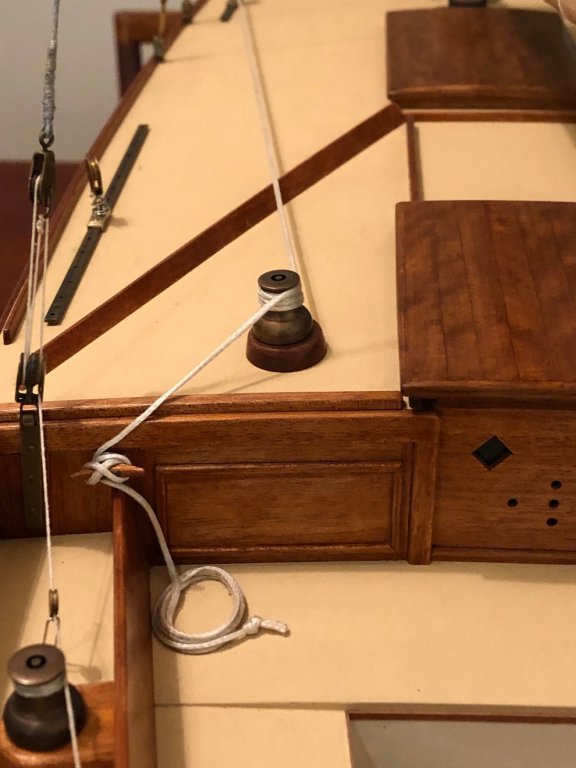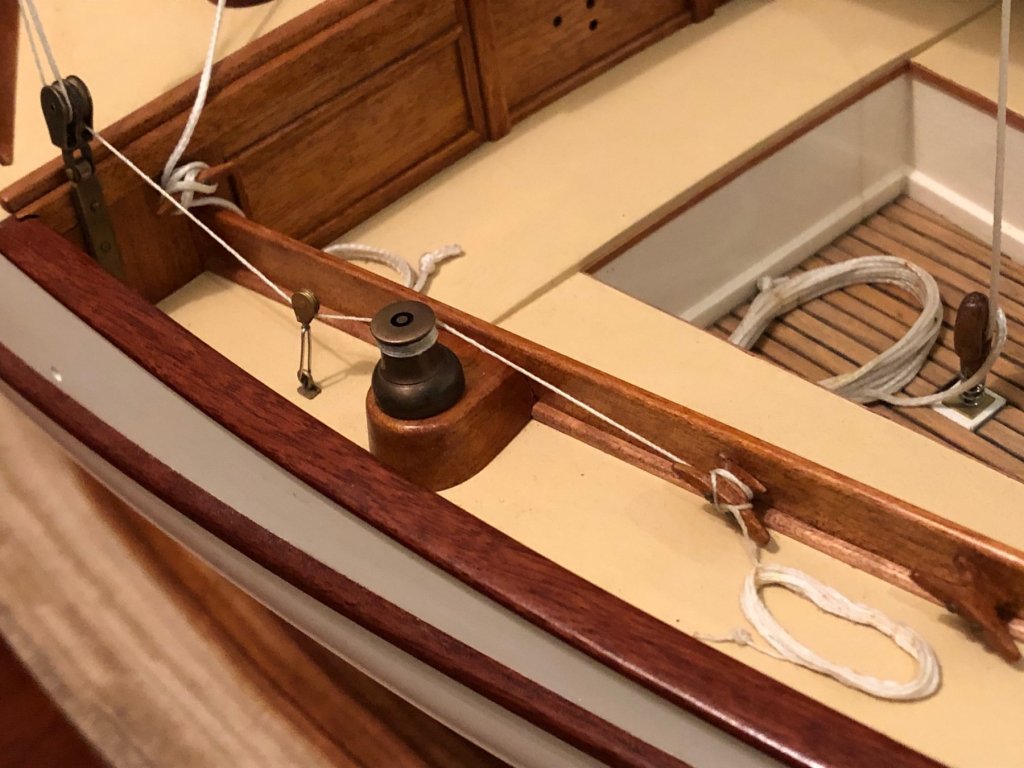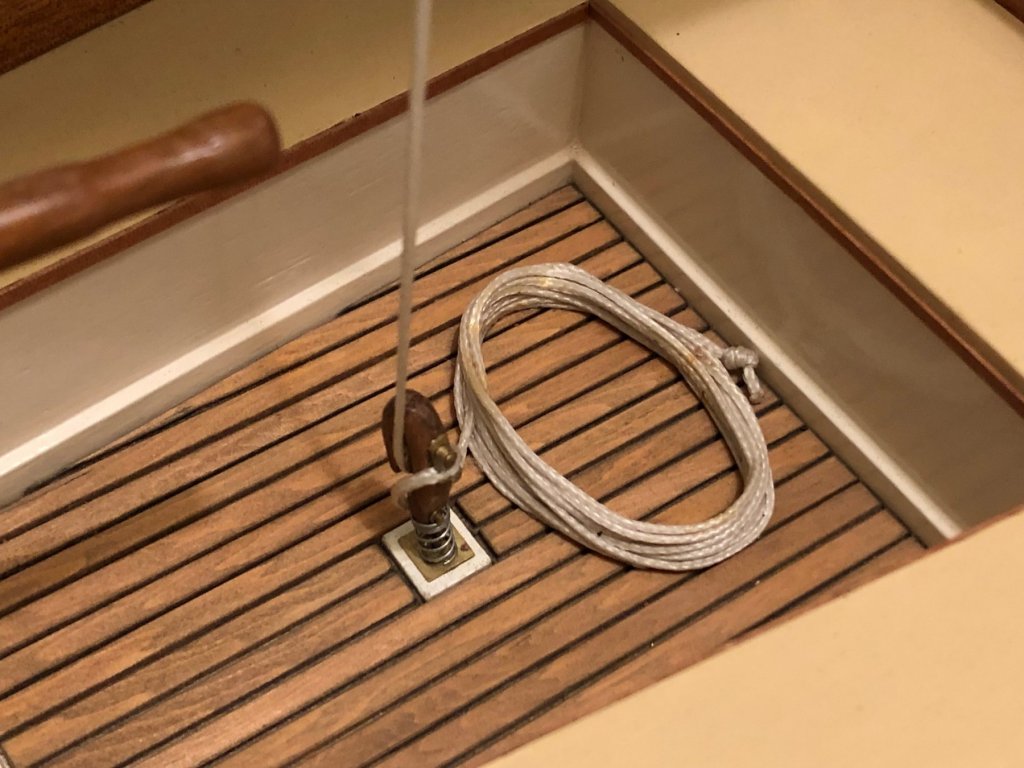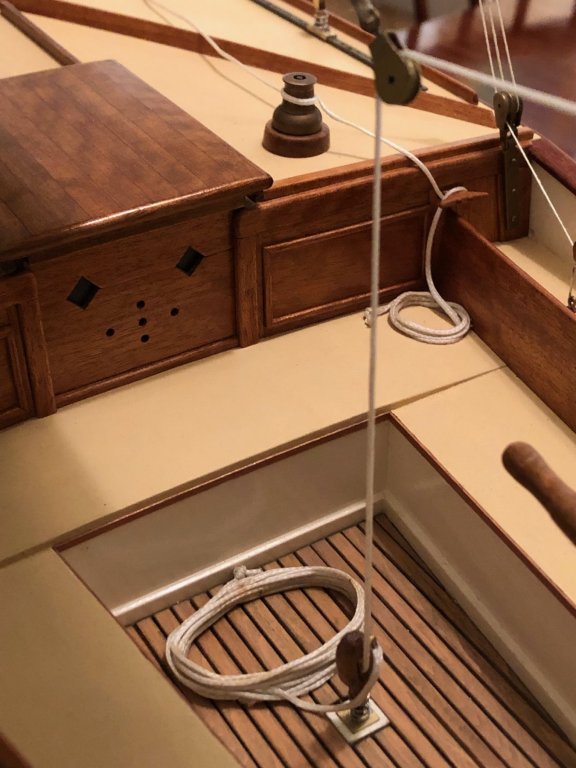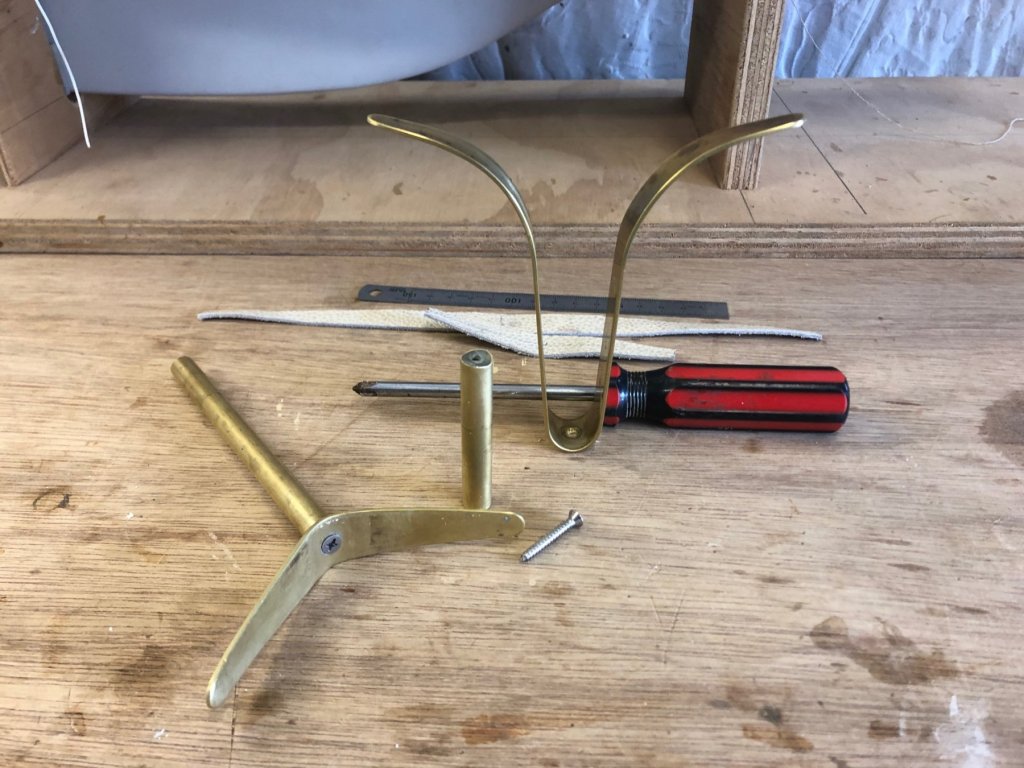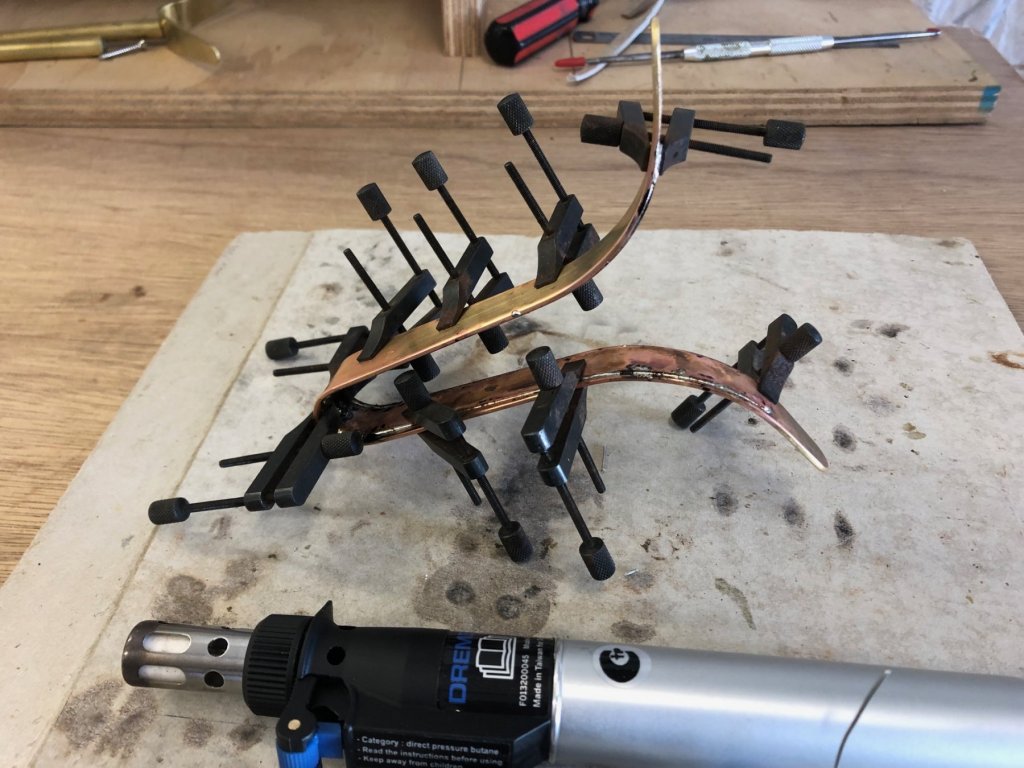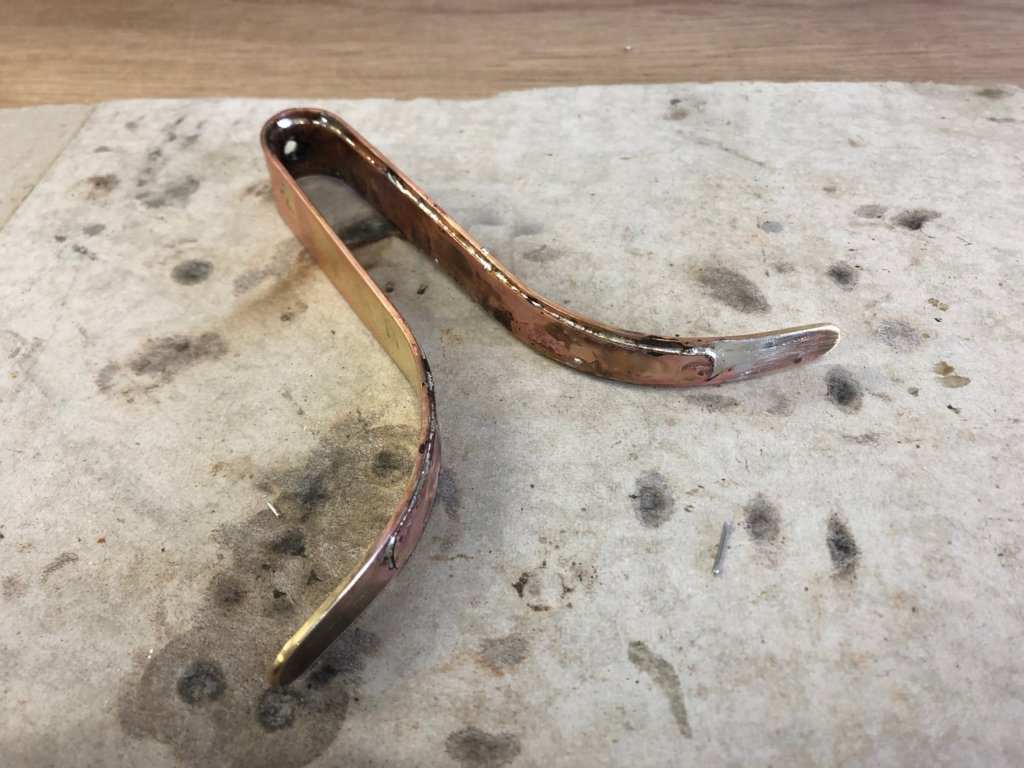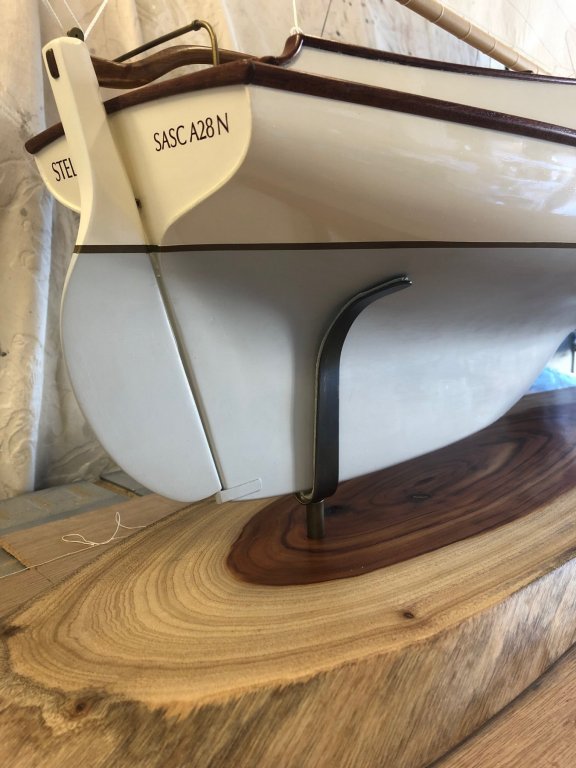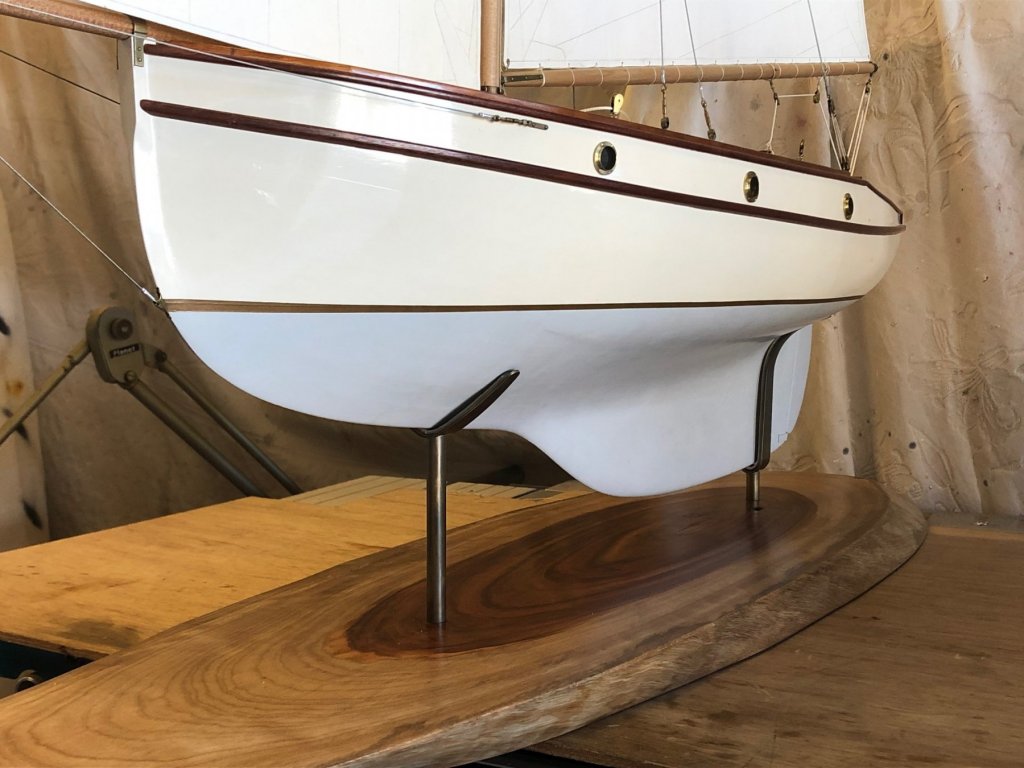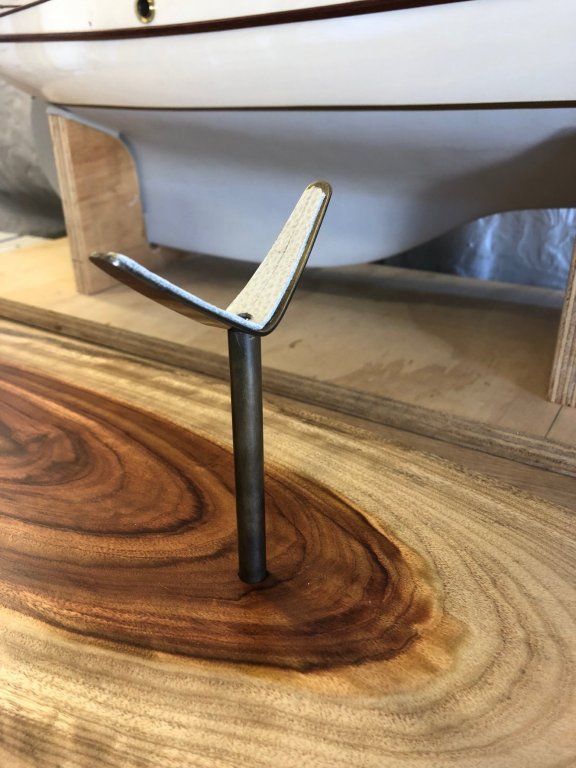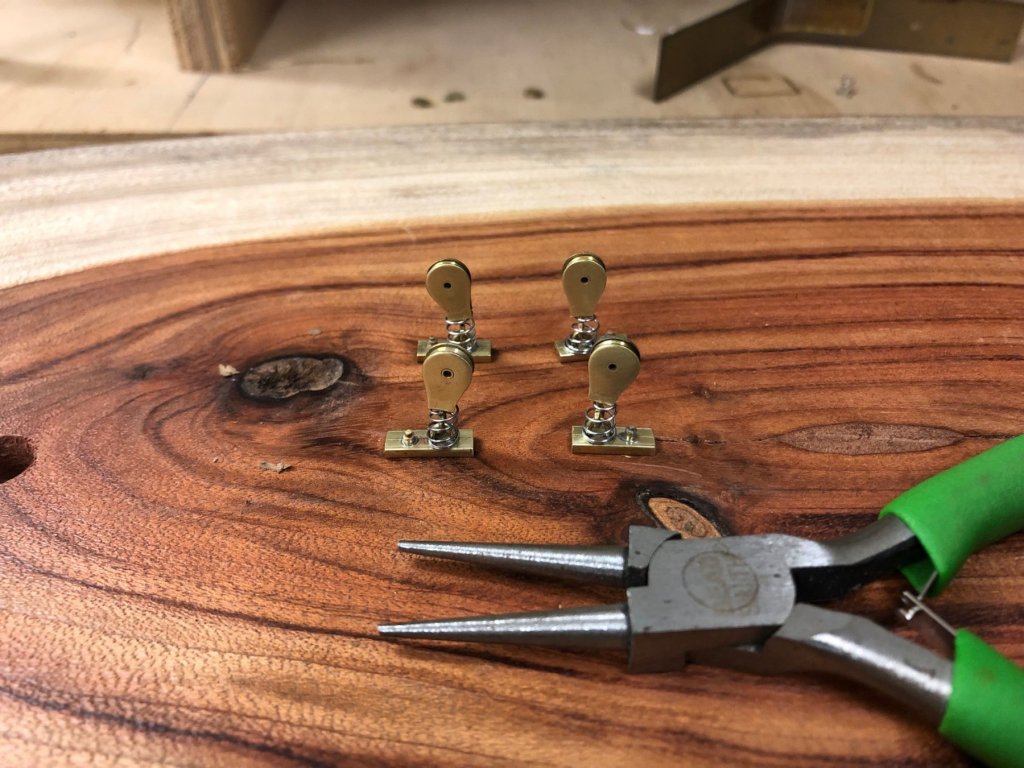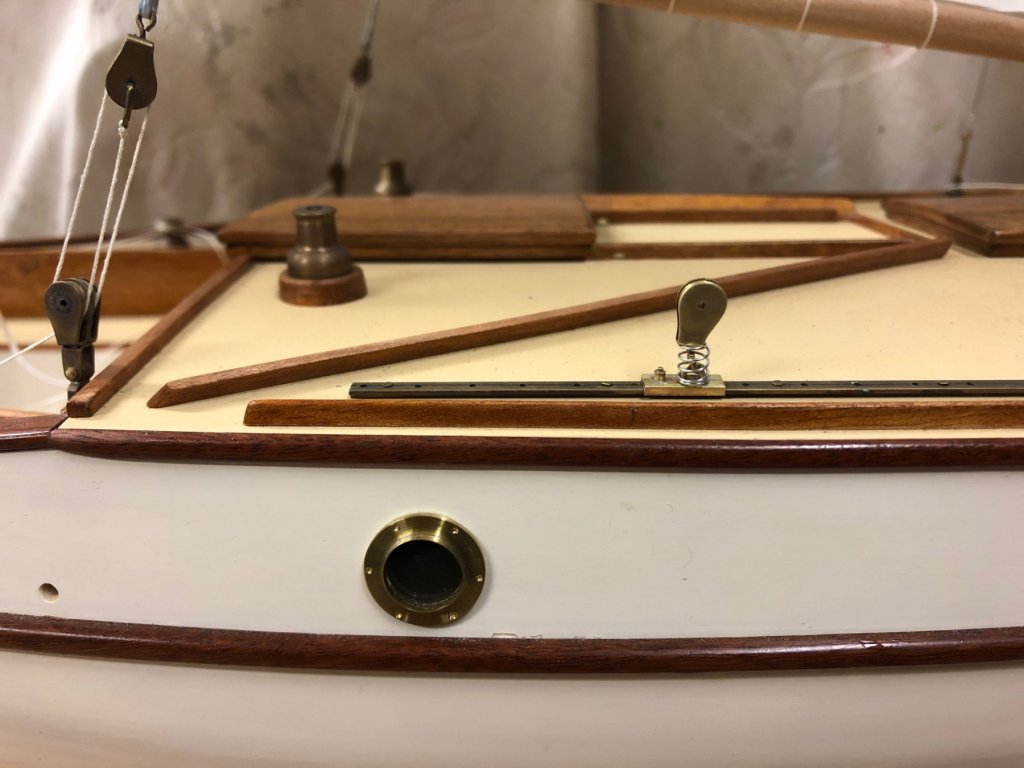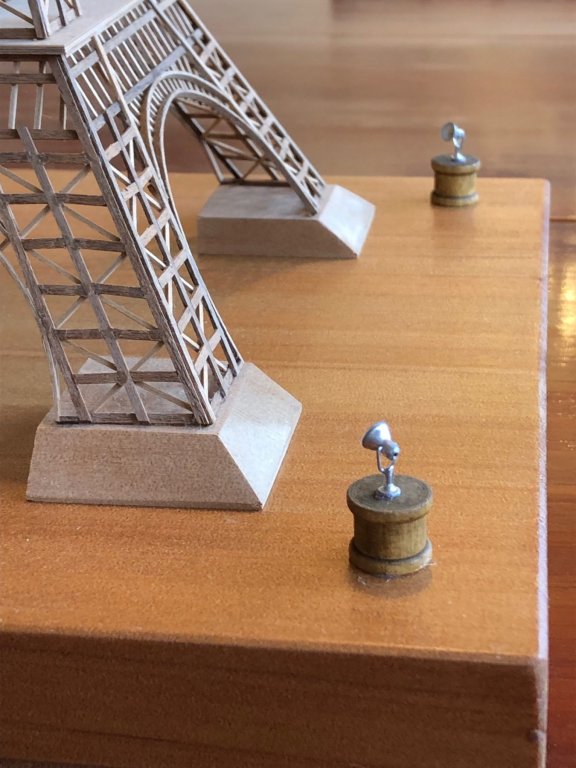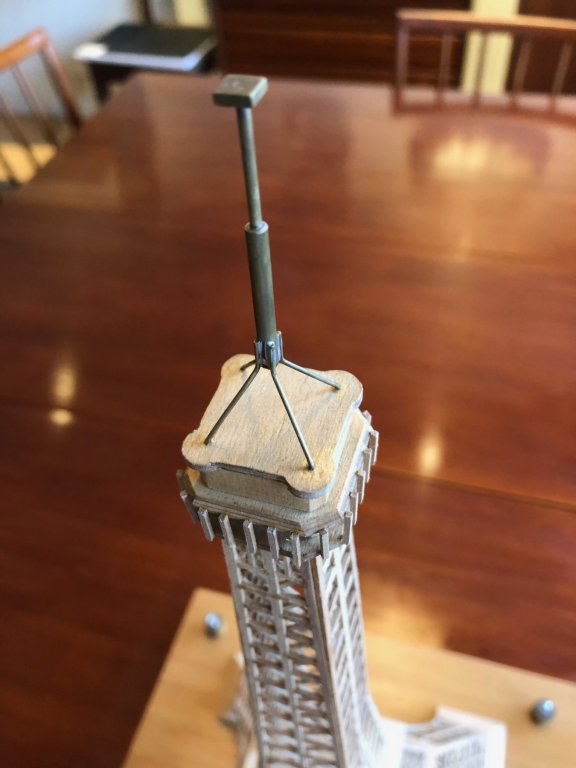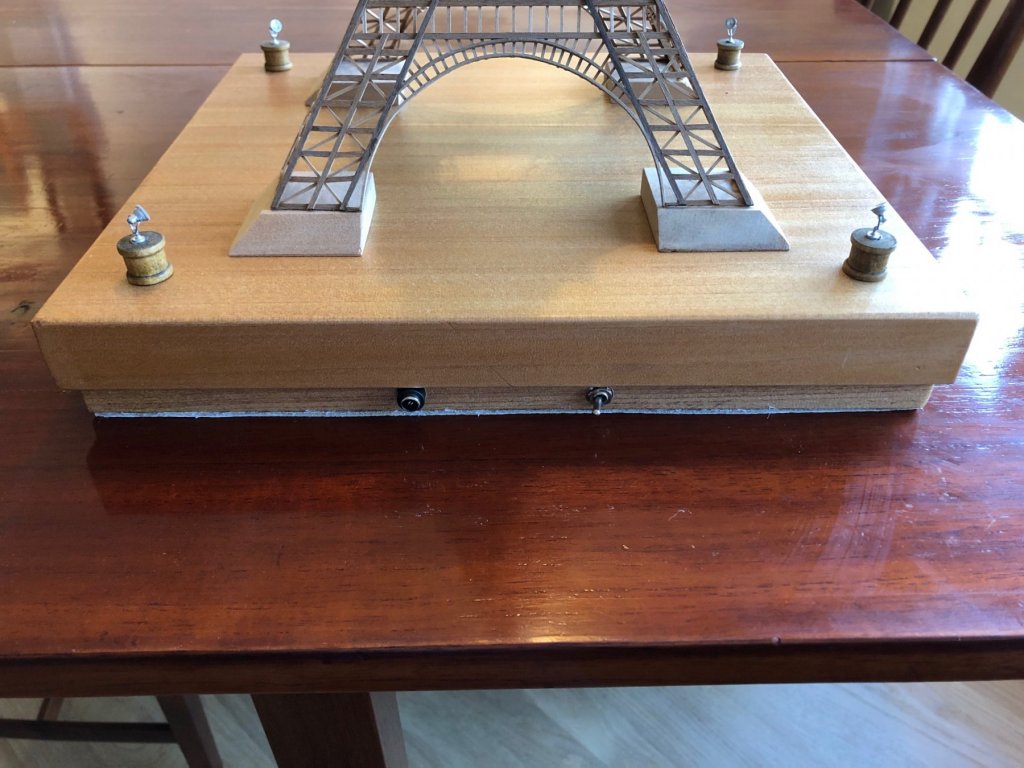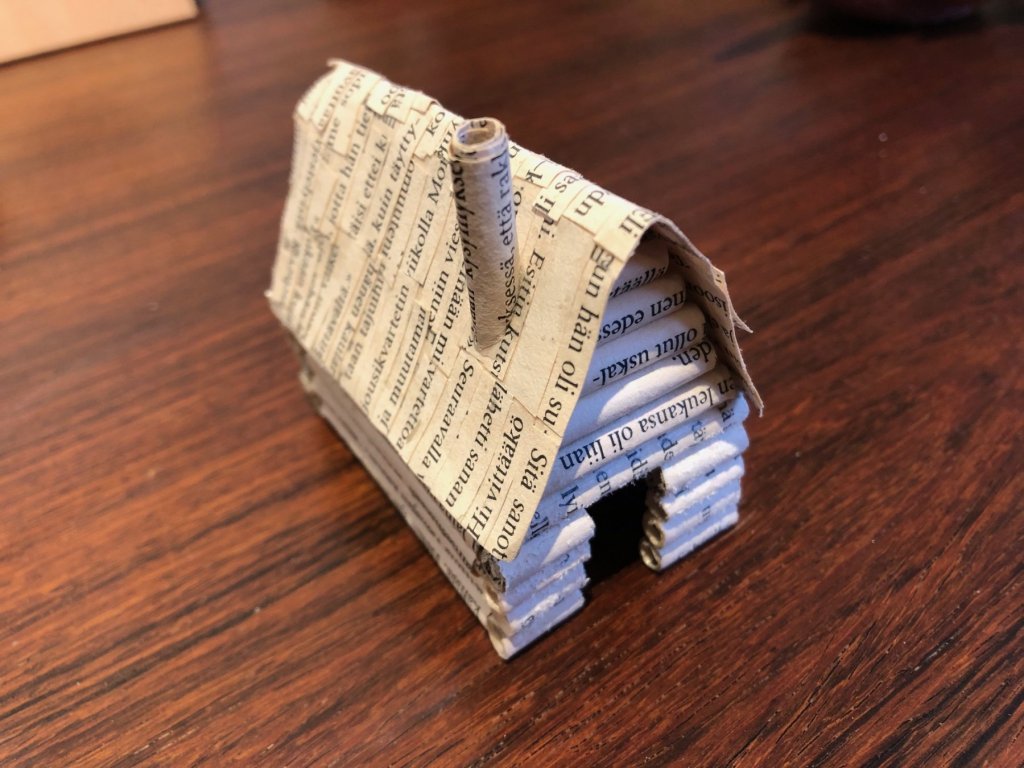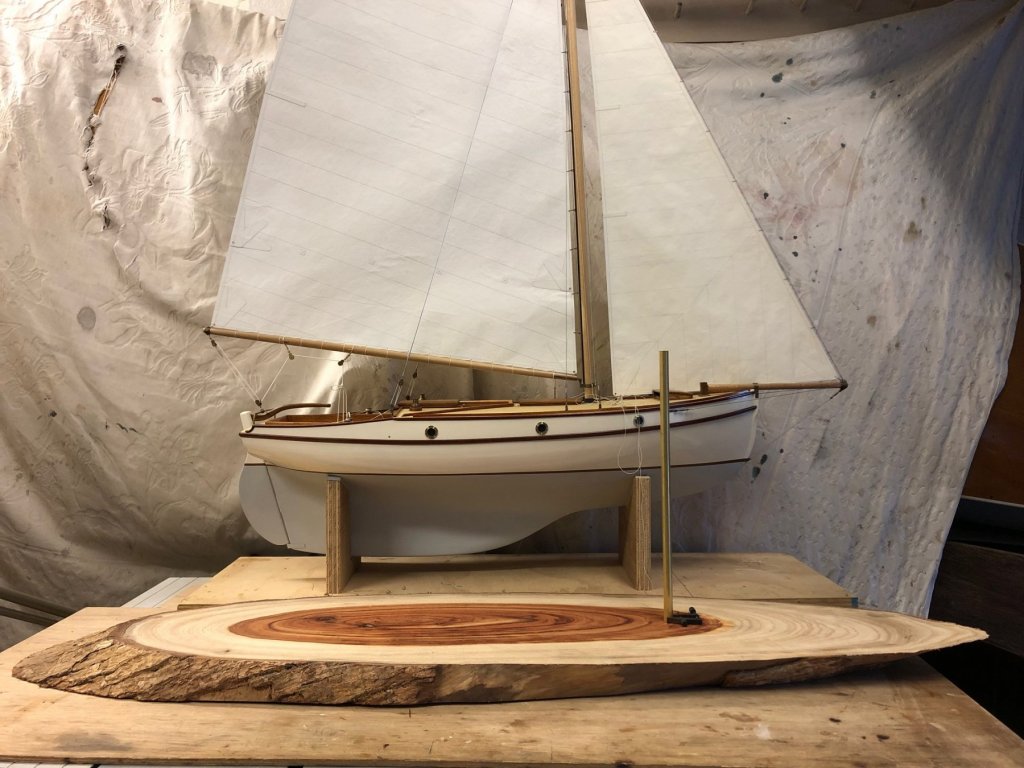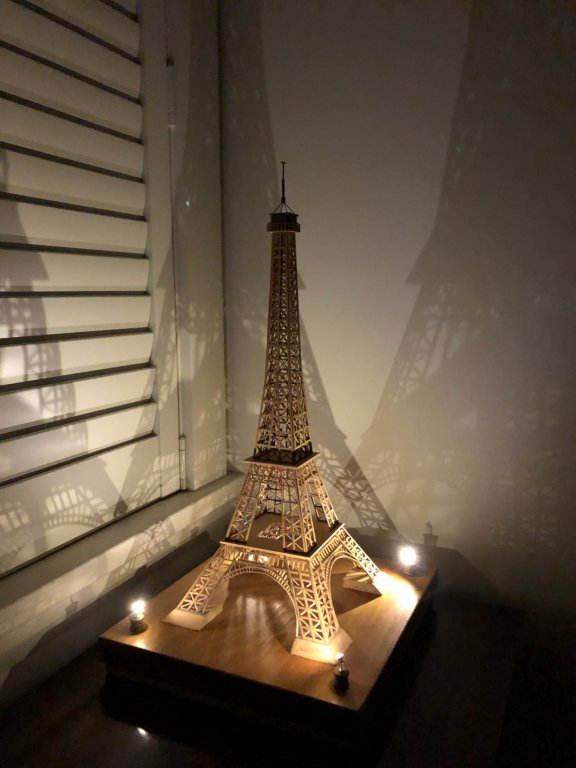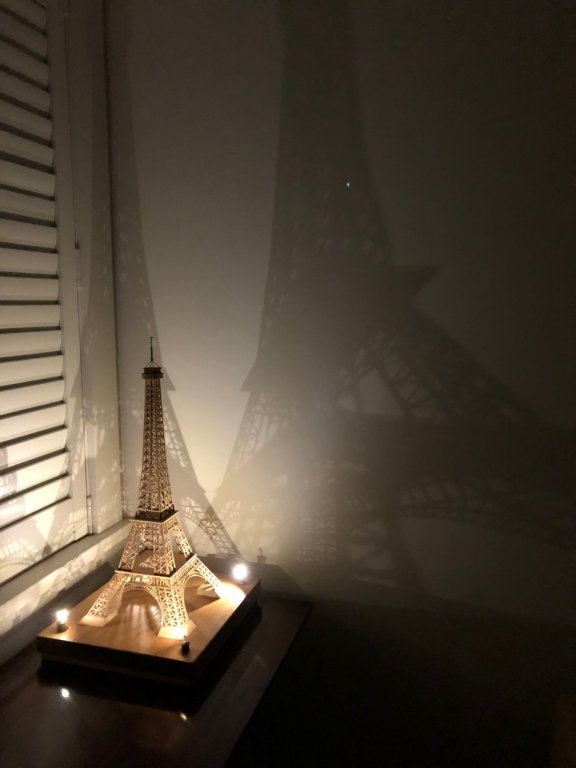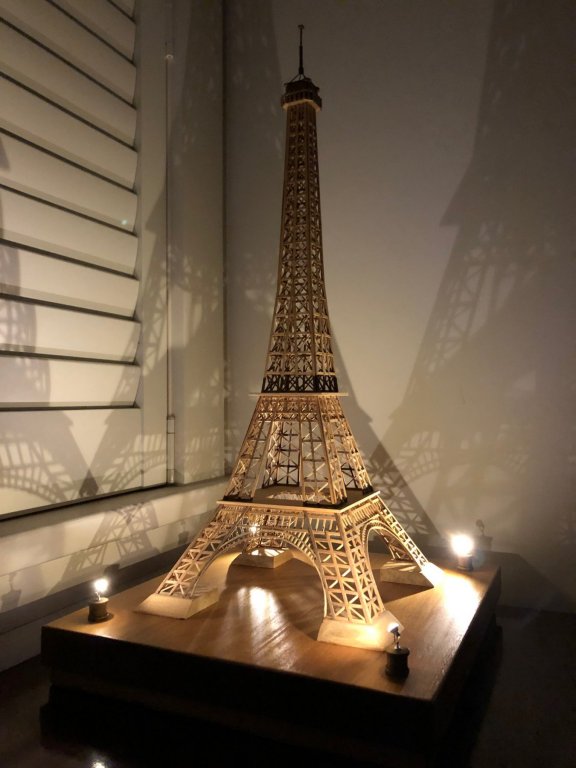-
Posts
826 -
Joined
-
Last visited
Content Type
Profiles
Forums
Gallery
Events
Everything posted by Mark Pearse
-
Hi Vaddoc, a good result, very nice. My experience is that CA can be brittle if there's not much surface area for it to work with.
-
thank you all. Steve, the Maluka to Hobart article here will interest you: https://sasc.com.au/wp-content/uploads/SASC0217W.pdf
-
Hi Steve thank you, it was very good to meet you. I'm glad you enjoyed the event, Cliff's boats are getting more attention & interest these days - the attention is mainly because of their surprising performance in races against boats of any vintage...which is ironic as he designed them more to do simpler things well: fishing, picnicking, camp cruising & single handed sailing. I liked your idea of the scaled Tammie Norrie model - I hope you get to that one.
-
a nice & delicate result Keith - & I really like the way the gold bridges the contrast between the mahogany & white BTW, is it a pure white, or tinted?
-
Most of the final details have now been done, but I haven't done a spinnaker pole, & it's an important detail so I'll probably make one. Below are photos of the rope coils etc. Initially I did a couple of coils by winding the rope around a piece of stick & then adding glue - & the result was realistic but I doubt that they would look good on a model. It became clear that the slightly messy yet realistic coils would catch the eye & stand out too much. I realised that the point of doing them neatly is that they don't stand out excessively on the model. The coils were done by drawing an ellipse on a cork base, putting a piece of clear plastic over, & putting a series of pins on the line. Glue was PVA/water about 2:1, then superglue for the lashings & ties. A sharp eye can see that the CA actually stains the thread a little. On some models that might be unacceptable, but I accepted it as part of the ropework colour variations generally. Anyway here's how they came up; halyards coiled at the mast: Running backstay: Jib sheet: Lazy jib sheet, mainsail sheet: Main sheet again: There's a few stains on the thread from the old pins; I scraped some of it off with the tip of a knife but left some on, the odd stain looks quite good.
-
thanks - fascinating & beautiful drawings... & the blokes in the raised stern seem be enjoying their spare time in port.
- 263 replies
-
- nave tonda
- round ship
-
(and 2 more)
Tagged with:
-
Hi Dick, (speaking as someone that is new to these craft) could it be that if the yards were to be lowered for a period, that they are just stowed on the deck & lashed down? If that's not too simple, & it doesn't mean that the crutches don't have a purpose.
- 263 replies
-
- nave tonda
- round ship
-
(and 2 more)
Tagged with:
-
thanks everyone Hi Vaddoc, the sail numbers are self adhesive vinyl cut to order, but there aren't so many places that do 25mm size. I looked at 'Letraset' type lettering but it's more expensive & the range available is limited these days. For the adhesive stuff, you order a few extras & it might not cost any more but it gives you a couple of sets to try your hand with. The transom lettering is also adhesive vinyl, but I had to go to the USA to order them - http://smalllettering.com They were helpful & good to deal with, & likewise I was able to order extras in different fonts/italics etc & then select when they arrived & experiment with the others.
-
On the hatches, I think I prefer what you've done over single boards. Their relative width means they wouldn't twist & fall through, even with just one panel in.
- 263 replies
-
- nave tonda
- round ship
-
(and 2 more)
Tagged with:
-
I've now finished the display stand. I've got a deadline to try & finish the last details of the model, if any of the Sydney forum members are interested there's an evening at our sailing club, talks by Bill Gale, Sean Langman & myself - & the model will be there - Wednesday 5th June. It's on the Ranger yachts generally & Cliff Gale's legacy of designs. Send me a message & I'll send more information. John, I did consider keeping the bark on the base timber, but a section of bark was missing & I was more confident of the result with it removed. Keith, yes, I was just using the timber as a stand to show off the brass on (while looking for a chisel to open the tin of paint). The timber base was finished with 2 coats of clear polyurethane rubbed on with a rag, then rubbed with 000 steel wool dipped in beeswax/gum turpentine furniture polish, then rubbed with a cloth. This shows how the brass tubes were filled with epoxy glue & drilled for the fixings - this technique was firstly to save cost (tube is 1/5th cost of a solid), & I don't have the equipment to drill out or thread the end of a solid. The brass flats were bend & shaped by hand. Unsurprisingly the keel support was a bit too flexible, so I soldered an inner flat bar. The dremel was able to give enough heat for this job. The brass was cleaned up & patinated to a dark brown, to tone it down visually, & was lined with some leather, then screwed together. The brass rods were glued into the timber & the timber will get some pads underneath, probably some unfinished cork. The holes in the timber weren't done by eye, my brother has a bench drill so I used that.
-
The jib cars are now done, I don't know what the conventional wisdom is on jibs blocks ,but I think they should be 'stand up' blocks so I pilfered the springs from two ball point pens. The blocks themselves are a little large, but they are feasibly large, if that makes sense. The block was attached to the U bolt on the car, & then the spring is wound on, first one was difficult ... then next less so, etc. And sitting loosely on the track:
-
Hi Steven Regarding the flag issue, I can't help wondering if they showed the flag to emphasise the outcome of the negotiations... I suspect our way of registering history as shown in period images is more influenced by more contemporary media, & we are more rigorous about the chronology. Also, the faces of the negotiating parties are beautifully rendered.
-
Hi Vaddoc you could still have the deadeyes as well as wire shrouds, if that's what you're considering - a large thimble or matching deadeye at the lower end of the wire, but others will know more about traditional rigging. It's practical to have wire shrouds tied off to the chainplates with rope, & having a tabernacle suggests that the owner needs to raise/lower the mast, & with rope tails it'd be by hand rather than needing tools, so a bit simpler. Rope isn't likely as shrouds for this boat.... but you seem to be enjoying the fantasy of this build, so there's no real reason you have to do it by the book.
-
Hi Keith, Eberhard it does seem odd, but I bet they were going to put it at the deck line but it looked better higher up. Elongates the hull, maybe a better proportion between the topsides above & below the strip....
-
HI Vaddoc well done, the hinges are very nice. If you are concerned about the rudder blade size, I don't think that it looks too big.
-
Thank you everyone, the heartfelt responses are great & I'll be sure to show my daughter the interest in our project. The drawing was from www.architecturalprints.com.au & we scaled photocopies to suit. I don't have progress photos but the method was old-school: cardboard backing with the photocopies on top & covered in plastic film, the sides of the tower were cut & then pinned to the board, & glued with PVA - the brownish Titebond is a good colour match. I will attached some daylight photos below, they will show also the wiring, the lights & the details more clearly. One note is that the wiring is done so that a DC transformer plugs from a wall plug to the socket on the side; & the wall plug (power point) is hard wired so the tower can be turned on from a usual household wall light switch if you leave the tower's toggle switch on. Lou, we agreed it should sit on a corner table in the Living Room, it's safer in the corner & the light effects are nice. John, it could be fun for her to make a nautical model, but honestly I'm struggling to keep up with the things she makes....recently it's functioning lolly dispensers from cardboard, a log-cabin house from scrolled paper, & a copy of her favourite going-out shoe in cardboard & string.... I'm the one that's looking very short of ideas...a boat. Steven, it's a vey interesting object to look at as you sip something relaxing - the balance between visual stability of the wide base & the stretched length of the top part is very interesting. A milestone in engineering, prefabrication & structural aesthetics. the brass work was interesting work - discussing how to make it: low voltage plug, toggle switch set back in a strip at the base:: wiring layout, resolved with assistance from small scale lights; working this out was new & the decisions were shared; hot-melt glue was handy & fast the paper-scroll log cabin, no technical assistance from dad in this case:
-
It's been a while, but I've been considering the mounting base & also picking away at the jib sheet cars. I bought an angle cut piece of Camphor a few years ago, it was cheap & it just seemed to work ... maybe. Anyway, the family like the idea so I'll probably do it. The supports will be very simple, I like the traditional thin round rods with simple supports. Below shows the timber, with a 10mm diameter piece of brass tube. 9mm looks better but I don't have a 9mm drill bit. The small cradles for the hull will be from bent brass, & they will be screwed to the tubes - the tubes will be filled with epoxy & then drilled for the screws. No doubt drilling into solid would be better, but I don't have the kit for that, & this will be strong enough. The bark is quite nice, but because it's partly gone, I'll probably chip it all off.
-
My daughter & I finished our co-build, a timber scale model of the Eiffel Tower. I'm not sure what scale it is, but it's about 550mm tall, the base & solid details are Kauri Pine, the structure is from pre-cut American Walnut 2x1 & 1x1mm strips, & the stage levels are 2mm plywood. The top is soldered brass, & the lighting is LED. Our daughter has long been fascinated with this wonderful structure, & because she has always preferred to make something than to play with it I proposed we make something challenging together. It's taken more than 2 years & has been fun, difficult & a great experience all round. A special note is on the the LED lights, which are especially nice & it's worth noting that they came from https://www.smallscalelights.co.uk , the ever helpful Jennifer Smith patiently helped us to resolve a wiring layout & sent the very nice & appropriate small spots. See how the shadowing on the walls is, that's just from these tiny spots. The spotlights are mounted on timber bases, similar to a timber cotton thread spool. The shadowing on the wall is fantastic, & we kept on a table in the corner so that the lighting looks good & it won't get bumped.
-
That structure forward of the engine looks like some sort of tank, possibly it's a fuel tank & breather pipe but it's doesn't seem to be a great location for a breather pipe as a following sea would surely reach them. I'm guessing a grey water waste outlet from a holding tank....bath, shower & sink waters fall to a low holding tank & are then pumped out from there.
-
Hi Steven, if you're concerned that a stop mechanism might not have been developed at that point in time, I don't think it's a technical problem not to have one. You use the windlass to take up the line & then tie off to a stout fixing point, the windlass is not used for holding load under anchor. Boats with heavy anchors usually have a way to manoeuvre the anchor on board once they are close, simply because it's easier (& less damage) than dragging the anchor up against the hull - such as a rope tackle & hook led from the mast.
-
Hi Keith I'd also guess the extra holes are bilge pumps, it wouldn't be unusual to have more than one outlet as connecting the outlet hoses from multiple pumps into one hose is commonly done - but has risks & lowers the pump efficiency. Option could be some sort of stern well that's in the deck....?
About us
Modelshipworld - Advancing Ship Modeling through Research
SSL Secured
Your security is important for us so this Website is SSL-Secured
NRG Mailing Address
Nautical Research Guild
237 South Lincoln Street
Westmont IL, 60559-1917
Model Ship World ® and the MSW logo are Registered Trademarks, and belong to the Nautical Research Guild (United States Patent and Trademark Office: No. 6,929,264 & No. 6,929,274, registered Dec. 20, 2022)
Helpful Links
About the NRG
If you enjoy building ship models that are historically accurate as well as beautiful, then The Nautical Research Guild (NRG) is just right for you.
The Guild is a non-profit educational organization whose mission is to “Advance Ship Modeling Through Research”. We provide support to our members in their efforts to raise the quality of their model ships.
The Nautical Research Guild has published our world-renowned quarterly magazine, The Nautical Research Journal, since 1955. The pages of the Journal are full of articles by accomplished ship modelers who show you how they create those exquisite details on their models, and by maritime historians who show you the correct details to build. The Journal is available in both print and digital editions. Go to the NRG web site (www.thenrg.org) to download a complimentary digital copy of the Journal. The NRG also publishes plan sets, books and compilations of back issues of the Journal and the former Ships in Scale and Model Ship Builder magazines.


